General recommendations for selection
To choose the right one from a huge variety of baking dishes, you should consider the characteristics you need:
- Volume. How many people do you plan to cook for in the purchased baking dish?
- Height. Pies are baked on flat baking sheets, muffins are baked in tall ones, medium ones are suitable for meat, poultry, vegetables.
- Additional characteristics. There is ovenware treated with a non-stick coating. There is heat-retaining one. Cooking in an oven with a lid helps to enhance the aroma and juiciness of the dish.
- Price + service life. Cast iron will cost more than silicone, but it will also last longer.
- Aesthetics. Ceramic or glass forms are immediately placed on the table, unlike inconspicuous aluminum or steel ones.
- Care process. Not all metal is dishwasher safe, non-stick coating or enamel cannot be scraped with a wire brush.
- Environmentally friendly, hypoallergenic. Although all baking utensils undergo quality control, it should be noted that glass is safer than Teflon – it does not emit harmful substances when overheated.
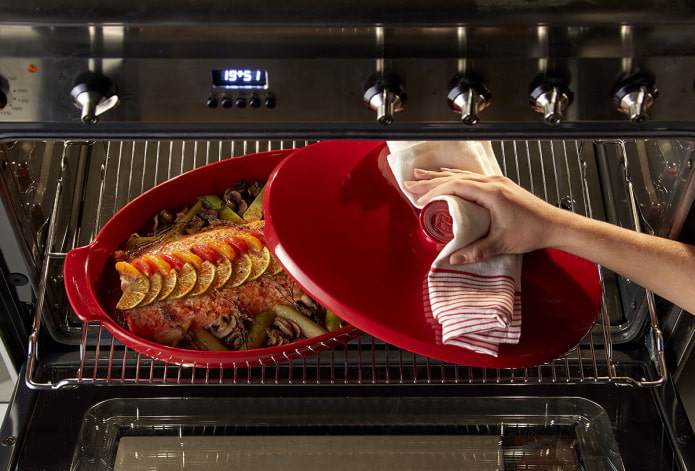
Material
Oven equipment is selected based on composition. Let’s consider the most common heat-resistant materials.
Cast iron
It has been used in cooking for a long time for a reason: the pan heats up evenly and retains heat. Thanks to this, meat and fish, vegetable side dishes are very juicy and aromatic. Another advantage is that the bottom does not burn, is not afraid of contact with metal spoons and forks.
Among the disadvantages is the large weight of the roaster, the possibility of rust (cannot be washed in the dishwasher!). If not properly cared for, the absorbed oil forms a dangerous crust that releases carcinogens.
Advice on choosing: look for frying pans with walls at least 5 mm thick, without chips, pits, or bumps on the inside.
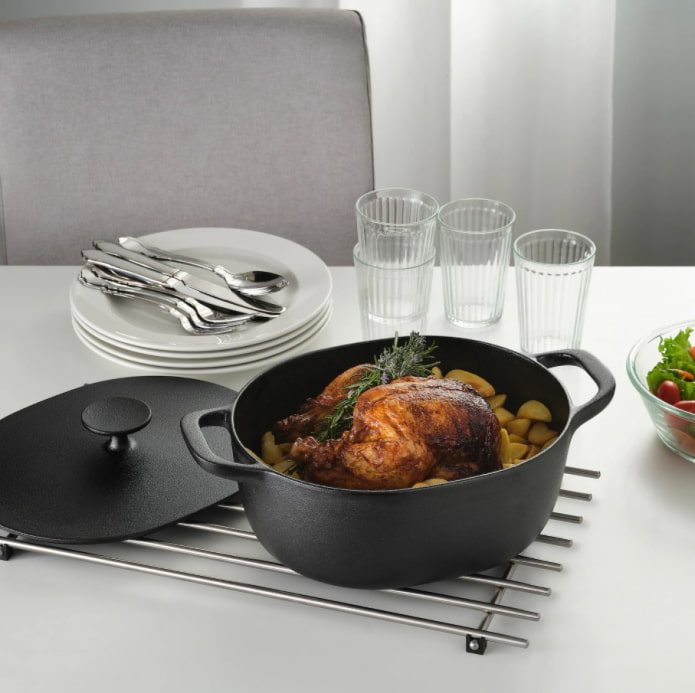
Stainless steel
Budget stainless steel cookware is best suited for everyday use: it is inexpensive, easy to clean (not afraid of corrosion, can be washed in a dishwasher), weighs little, and lasts a long time. The choice of shapes and sizes is huge: from standard sheets to shaped muffin tins.
Among the disadvantages is the possibility of food burning, as well as uneven heating: it quickly heats up, quickly cools down.
Advice on choosing: pay attention to the quality of the coating, it should be uniform, without scratches, cracks, chips. Fans of dietary dishes should give preference to cookware with a Teflon coating: it cooks without oil and fat.
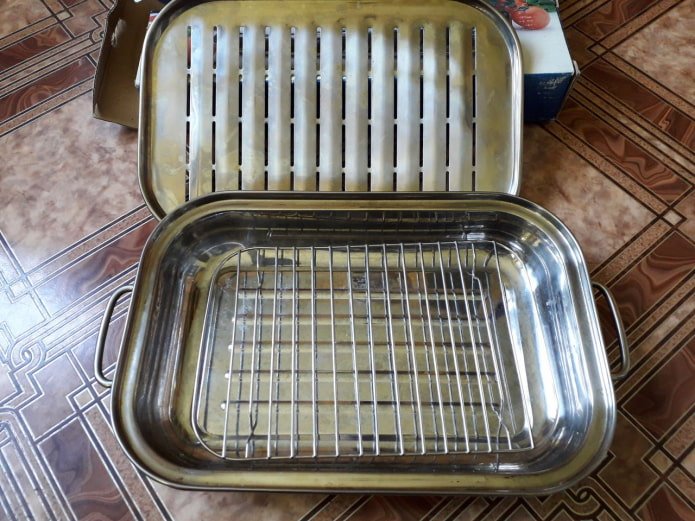
Aluminum
Light and durable metal was initially used to serve meals on board passenger liners, but thanks to its obvious advantages, it soon won the hearts of housewives around the world. Unlike metal or cast iron containers, aluminum containers store food: no metallic taste + bactericidal properties.
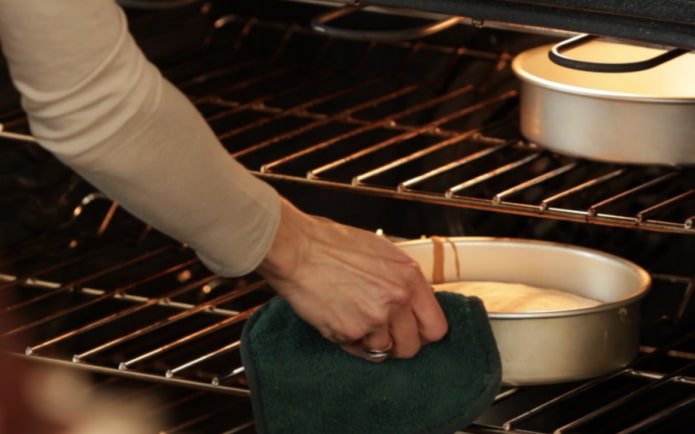
Ceramics
Ceramic cookware is incredibly good: plain or decorated with intricate patterns, it will decorate not only the kitchen, but also the festive table. The main purpose is stewing or simmering. The porous material provides uniform heating and guarantees a delicious, aromatic dinner. Whether it’s individual clay pots or large pans, cooking in them is a pleasure.
There’s only one downside: if you handle them carelessly, your favorite fragile oven container may break.
Advice on choosing: as with the first two, the surface should be free of chips, cracks, or abrasions — initially low-quality cookware will crack the first time you heat it.
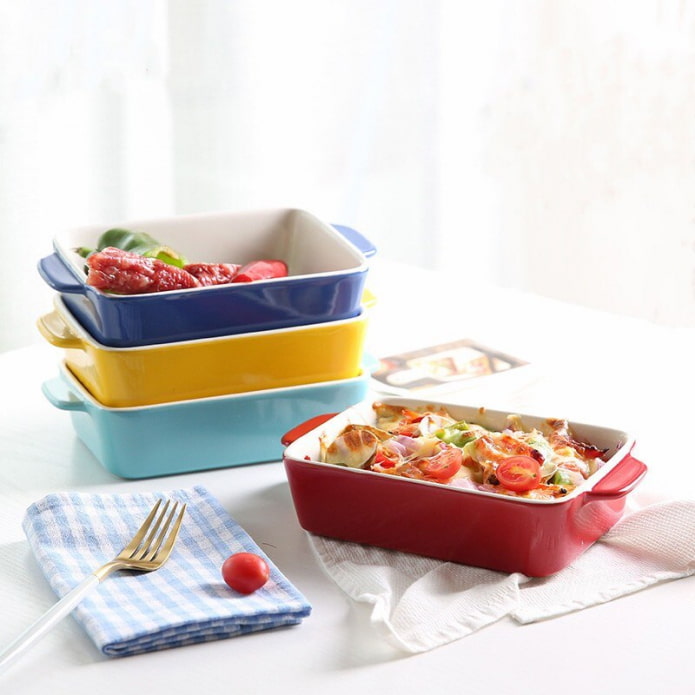
Glass
The main disadvantage of glass cookware is its sensitivity to temperature changes. This affects the cooking process: it’s better to heat the pan together with the oven. Otherwise, heat-resistant glass is the ideal material for simmering!
Provides high-quality heating, preserves nutrients in food, saturates the dish with aromas, and is suitable for serving delicious food.
Advice on choosing: since glass is slippery, choose options with handles – it will be easier to take out hot dishes.
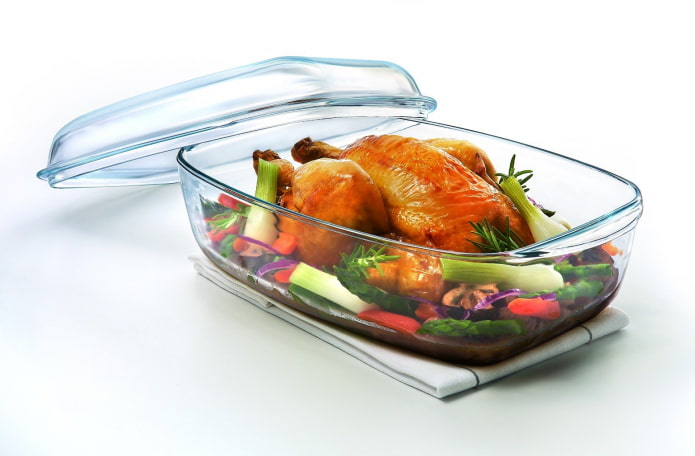
Silicone
Ultra-modern silicone molds can easily withstand temperatures from -40 to +260-300 degrees. That is, they are not only used for baking, but also for freezing products. They are inexpensive and have a wide range of products (from simple shapes to fancy ones in the form of flowers, animals, buildings).
The disadvantage of “liquid” is that silicone containers do not hold their shape well, so they require an additional stand in the form of a metal, ceramic, or glass plate.
Advice on choosing: pay attention to the certification of the dishes, they must be made of food-grade material.
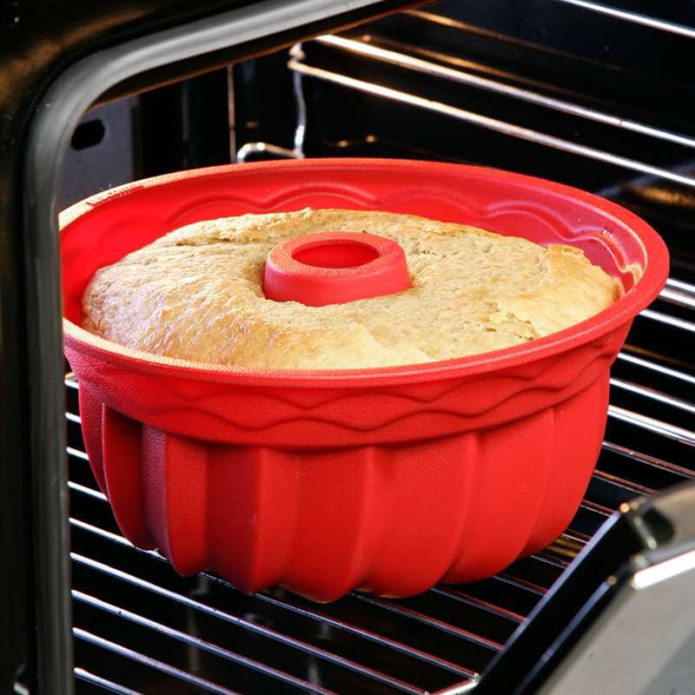
To summarize, we will compare all the options by 3 main characteristics:
Shape
Cooking different dishes in the oven requires different conditions, and accordingly, different products.
- For baking, for example, it is recommended to use flat, low baking sheets.
- Meat or poultry are cooked in tall oval or rectangular pans — they promote even heat flow.
- Round pans are convenient for cakes and pies — in the oven, the heat goes from the edges to the center, so the biscuits and filling are baked perfectly.
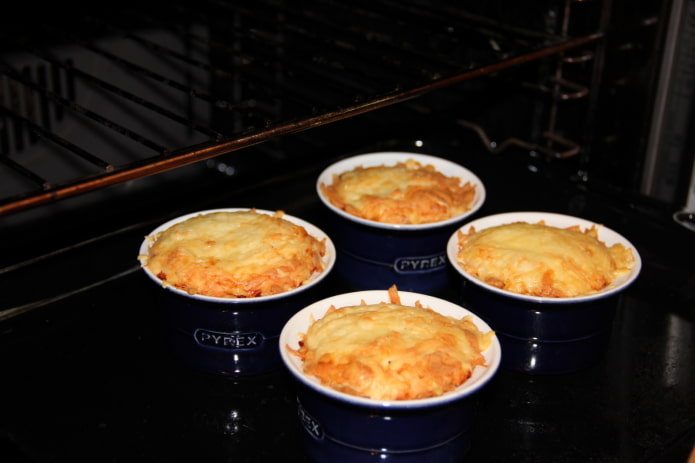
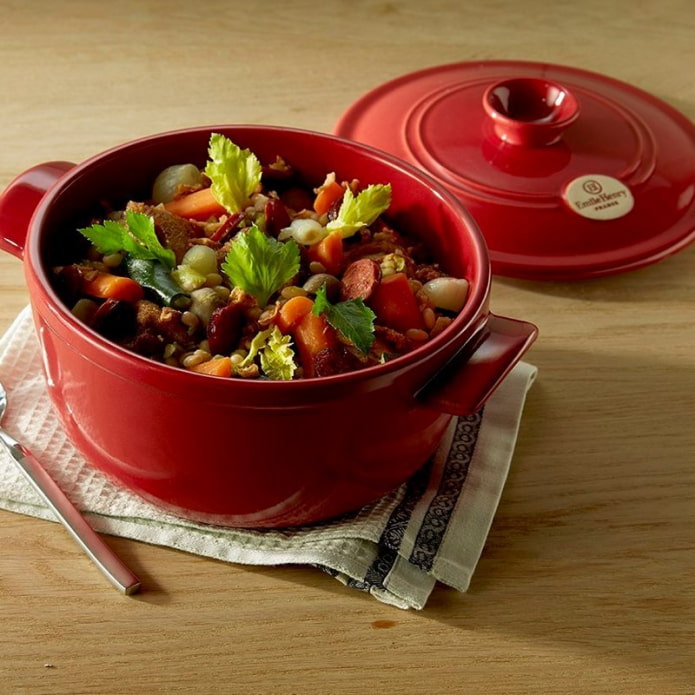
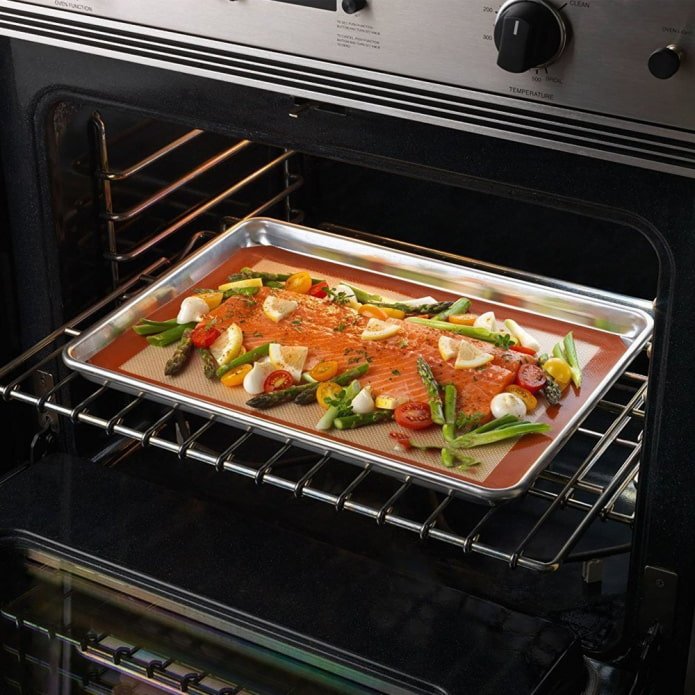
In addition to standard baking sheets, there are also other types:
- Cocotte makers. Small portioned bowls with handles. Julienne is usually baked in these. There are also ramekins – smaller cocotte makers (90-120 g) without handles. Suitable for baking breakfasts and desserts.
- Roasters. Elongated saucepans with a lid. The best ones for the oven are made of cast iron or ceramics with thick sides.
- Roasters. In essence, they resemble goose pans, but are usually round. Suitable for meat, poultry, and vegetables.
- Pots. There are both portioned and large ones – tagines. The clay base and the lid help to preserve the taste and juiciness of the products.
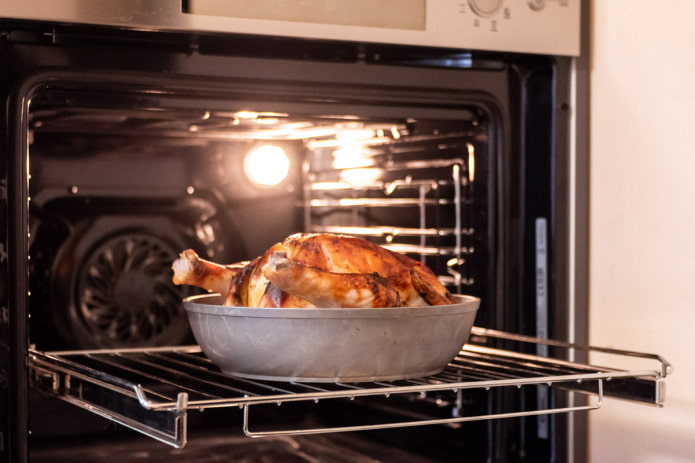
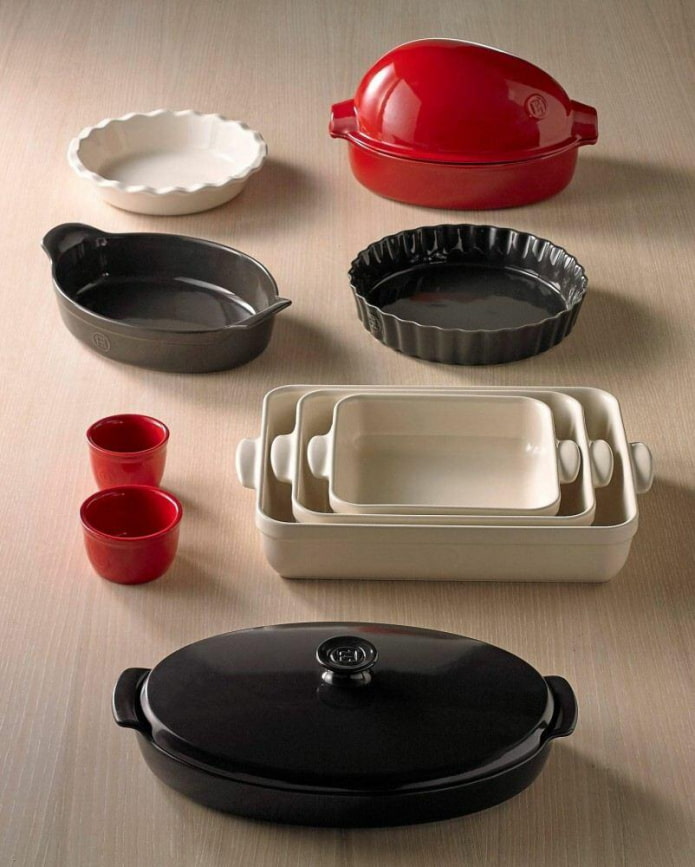
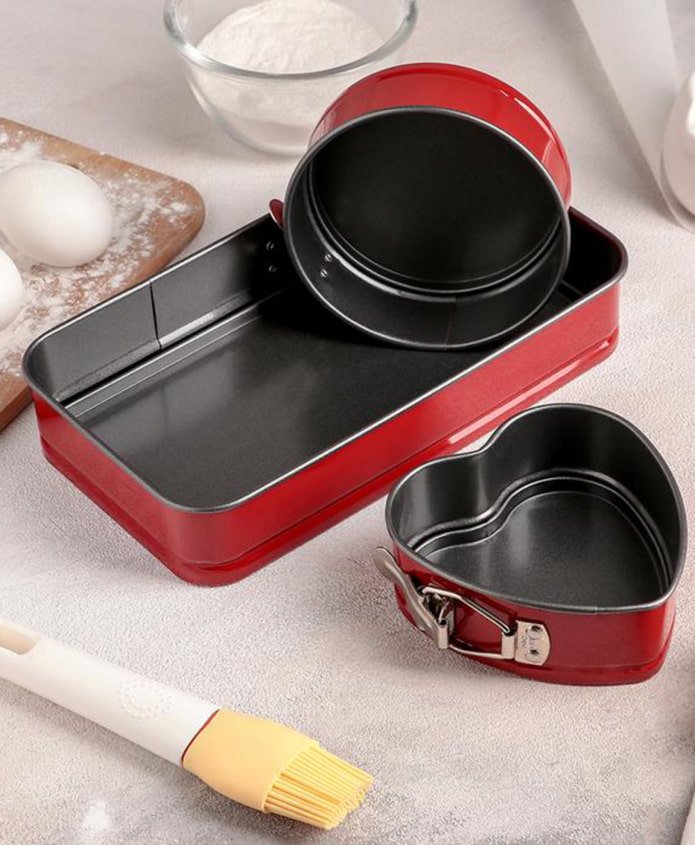
Purpose
In order for the food cooked in new cookware to meet your expectations, you should decide what exactly you expect from the purchase.
- Cooking meat, poultry, fish in the oven requires uniform heating, preservation of juice: this means you need an oval, round or rectangular roasting pan with a lid.
- Crispy vegetables require high thermal conductivity, such properties are found in steel. And stewed ones need slow heating – ceramics, glass, cast iron.

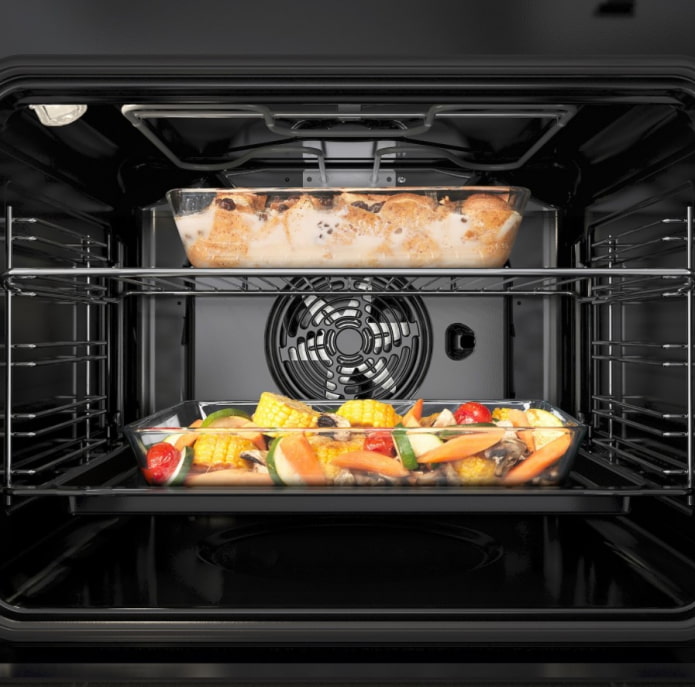
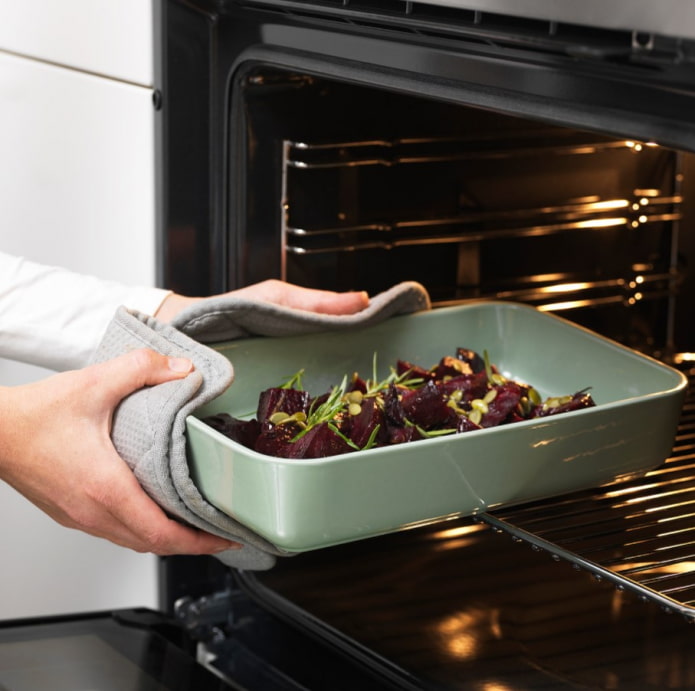
- Cookies and gingerbread need air and heat: a flat stainless steel pan will do.
- Biscuits, on the contrary, should be heated slowly so that they have time to rise: round metal molds with Teflon for the oven are best.
- Muffins are usually denser – so a metal or silicone mold with a hole in the center will help to bake on all sides.
- Portion serving is made in cocotte makers, duck, rabbit, and chicken carcasses are cooked in duck pans.
- A steel circle with holes or a special baking stone is suitable for pizza.
- Bread is baked in tall aluminum molds – they are easy to remove from them, after use it is enough to wipe.
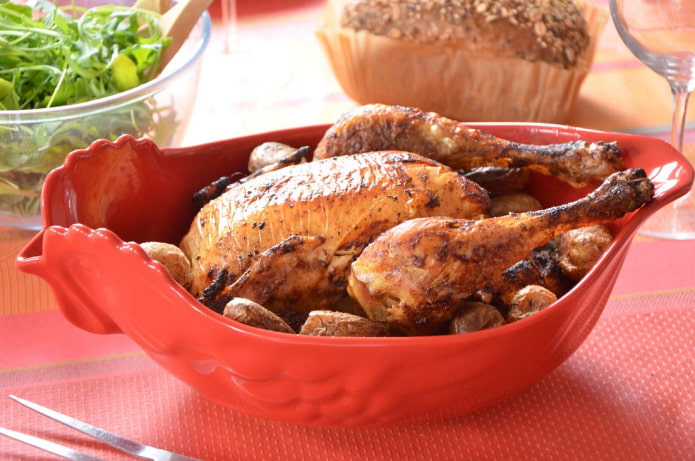
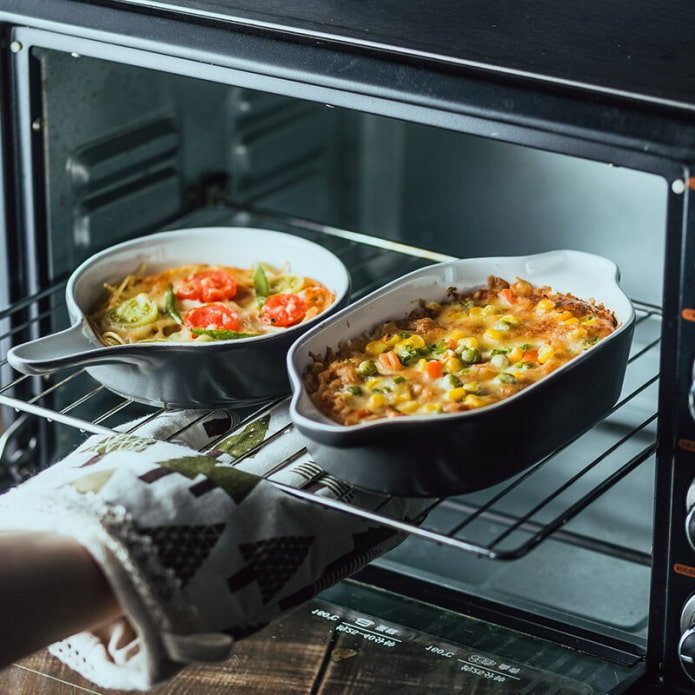
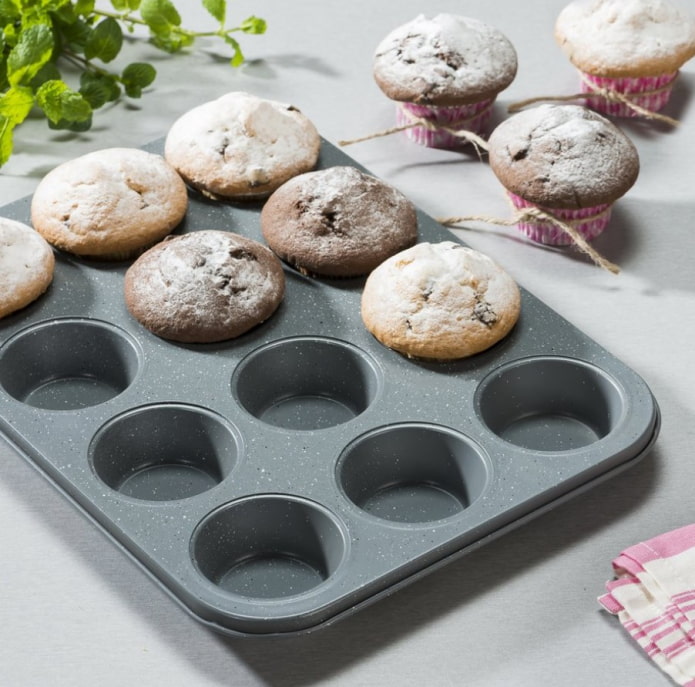
What to consider for different types of ovens?
Regardless of the manufacturer and type of your stove – gas or electric, this fact has the least impact on the use of cookware. It is more important to choose not by the type of oven, but by the maximum temperature of use: in glassware you can bake at a temperature of up to 300 degrees, as well as in Teflon. Silicone can withstand temperatures up to 260C.
If the oven has a working thermometer and controls, there are no restrictions on the use of molds.
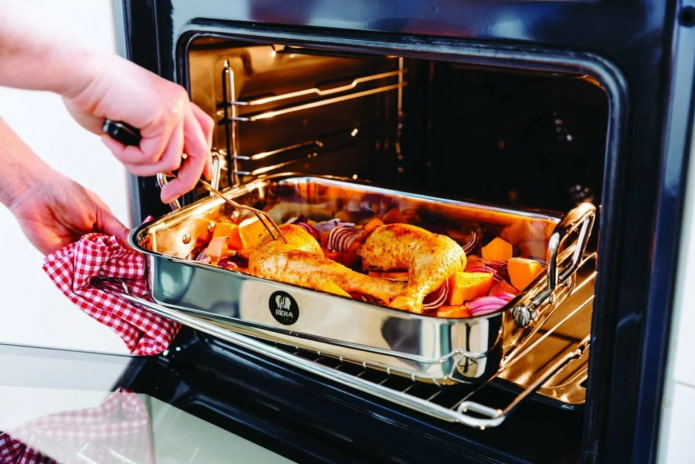
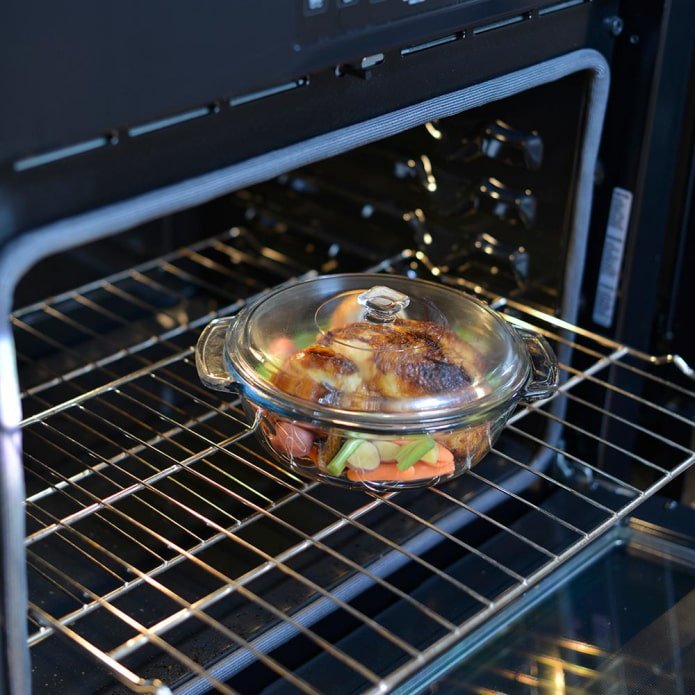

Care features
Cooking in the oven is easy, but washing dishes is a real pain. To make the process quick and easy, choose stainless steel baking sheets with a Teflon coating. Just wipe them with a soft sponge and dishwashing detergent – no burnt products and no difficulties with care.
Glass, ceramics, stainless steel are put in the dishwasher – usually the machines cope with this difficult task with a bang. The most difficult to wash after the oven is cast iron – it tends to absorb oil, so metal brushes and abrasives are used for cleaning. Old frying pans can even be sanded.
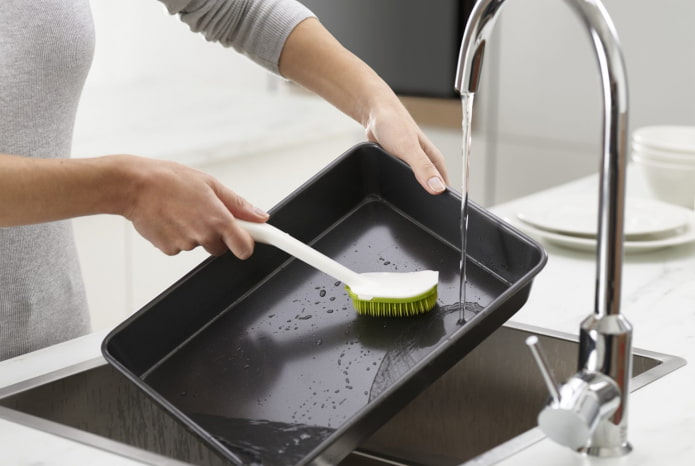
It is impossible to single out one optimal option from the whole variety of ovenware. To get a decent result, always select roasters and baking sheets for a specific task.
Now reading:
- Room design for a girl: more than 60 ideas and photos of interiors
- fresh varieties of petunias ready for planting next season.
- Discover the Ford Kuga: Versatile & Efficient SUV
- Floor tiles: more than 70 photos and ideas for the kitchen, bathroom, and other rooms.
- Figured ceilings: more than 70 photos and ideas for two- and multi-level solutions.